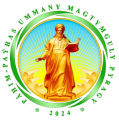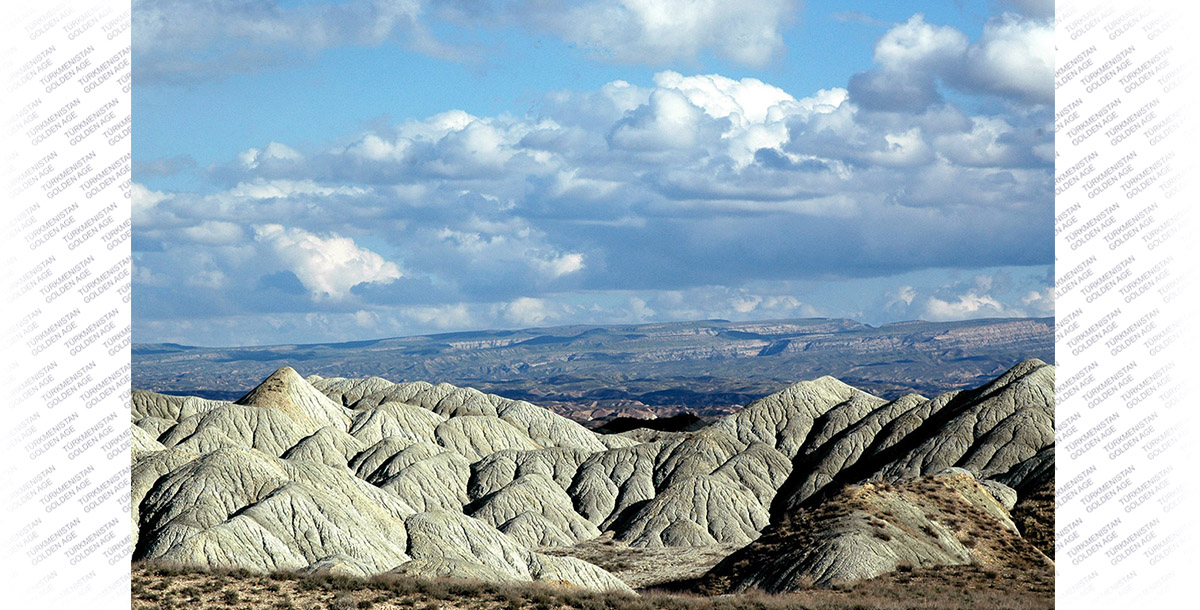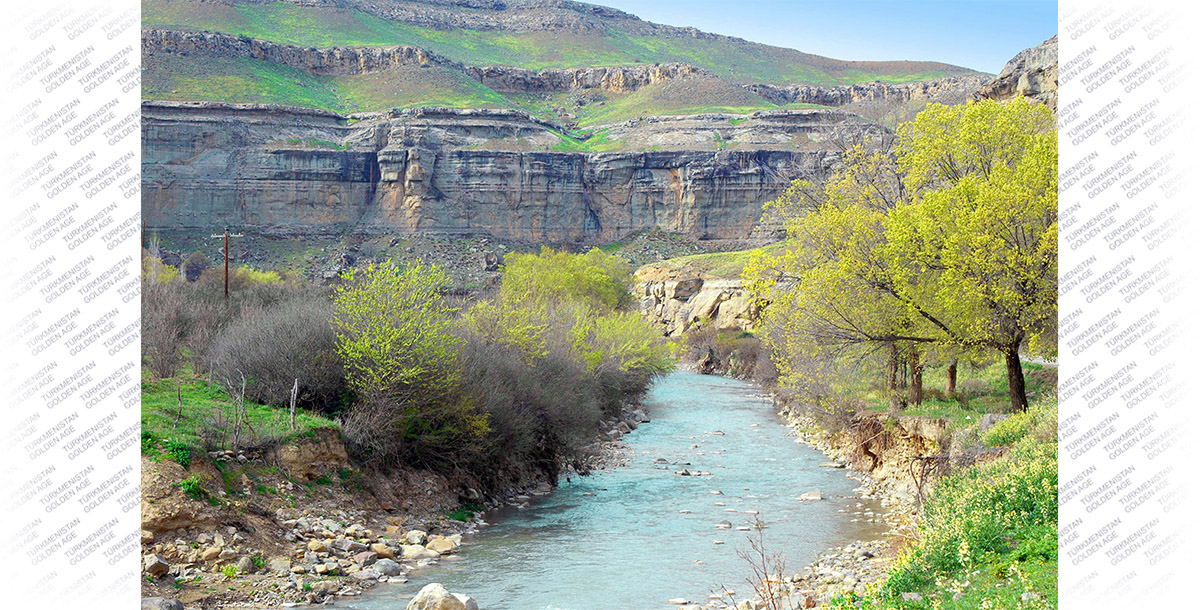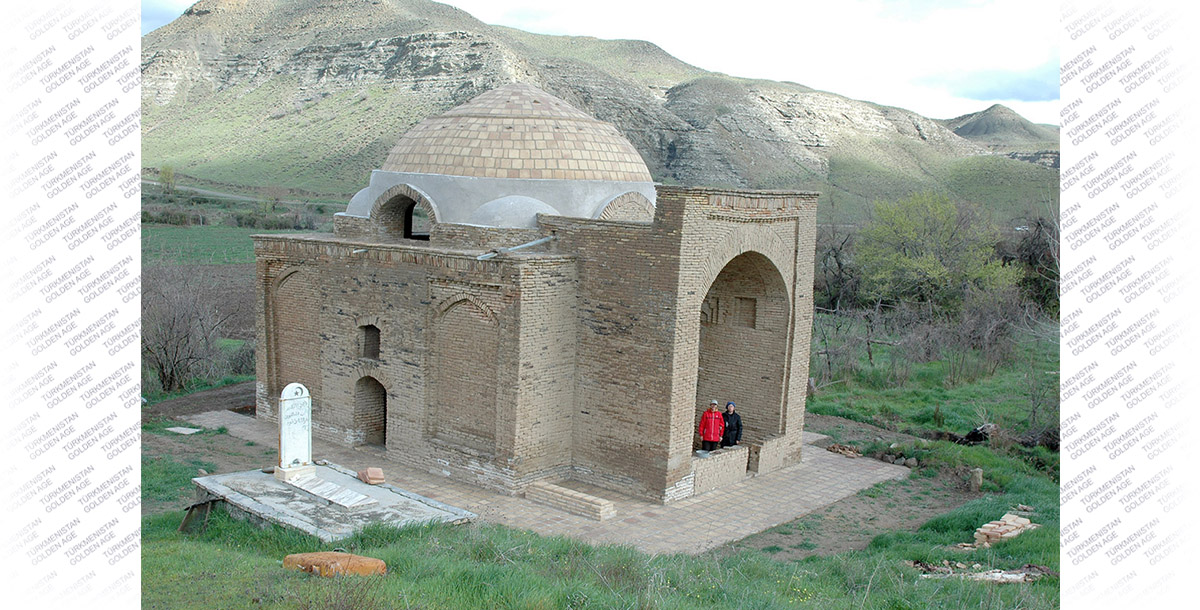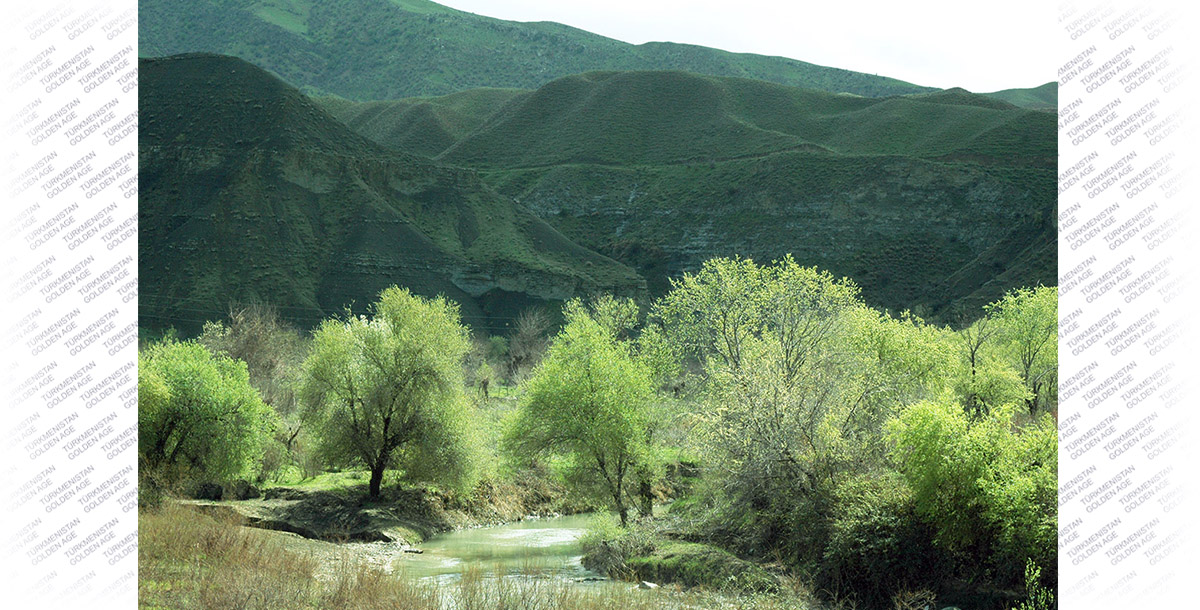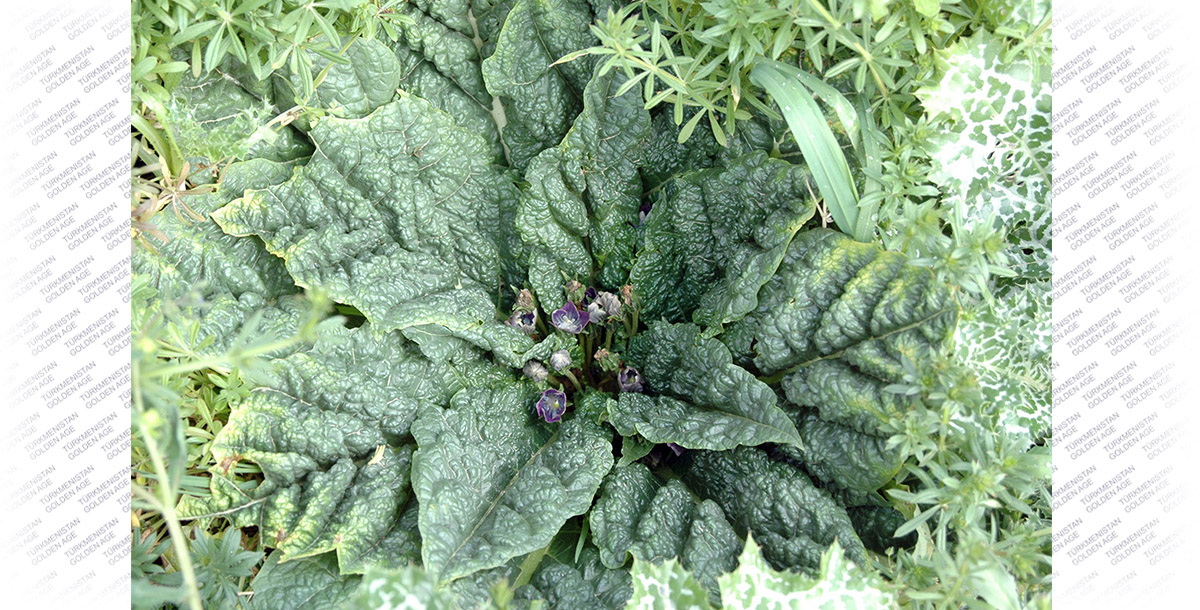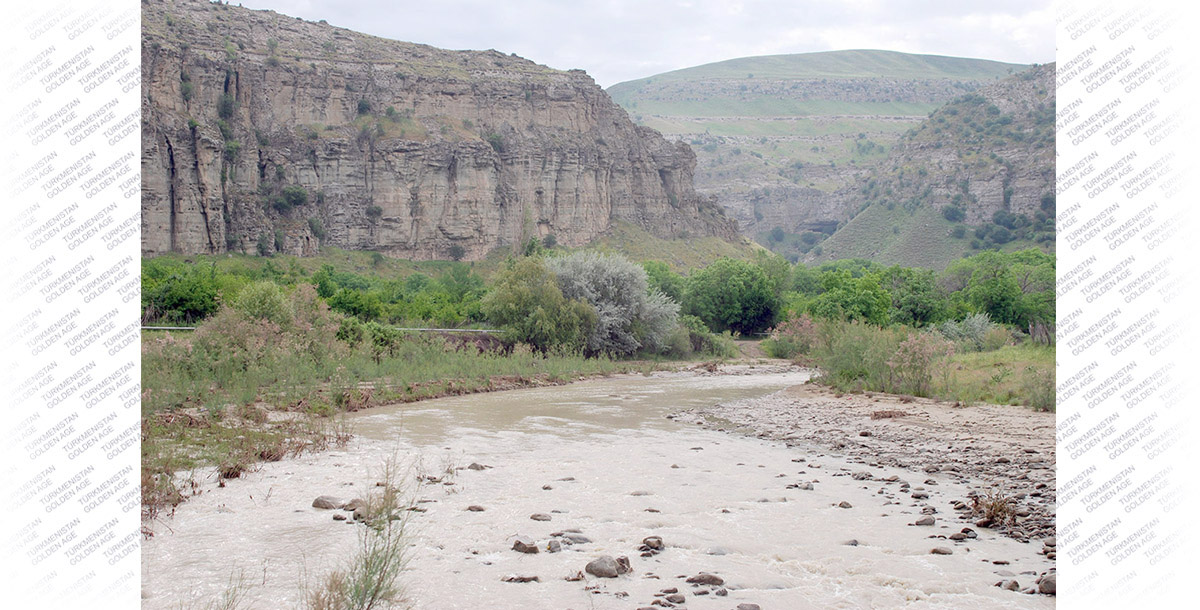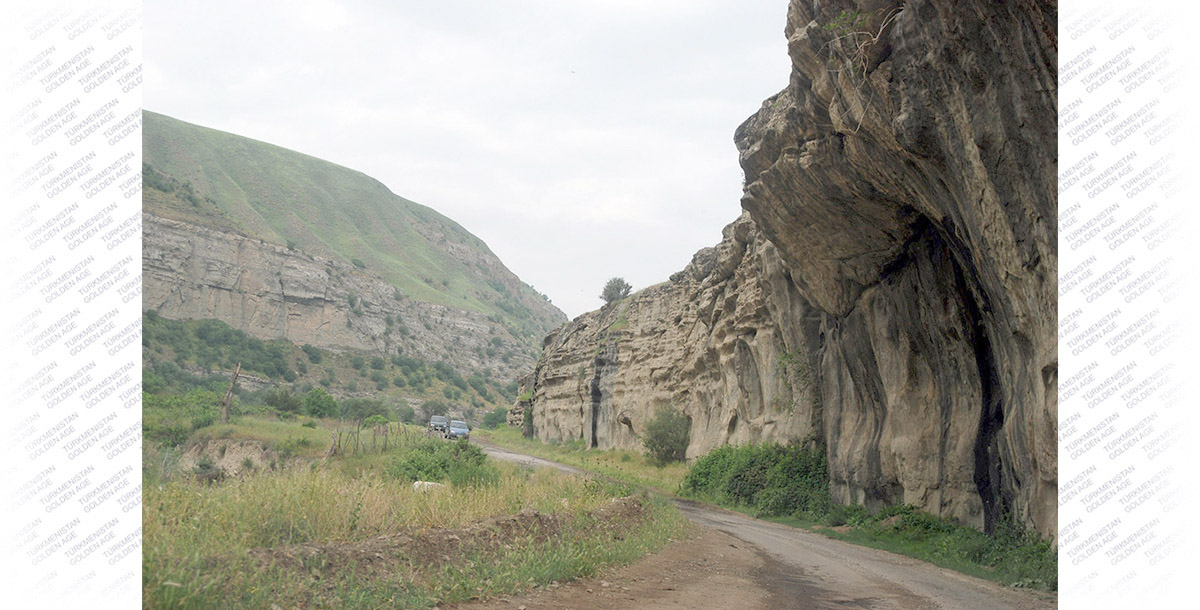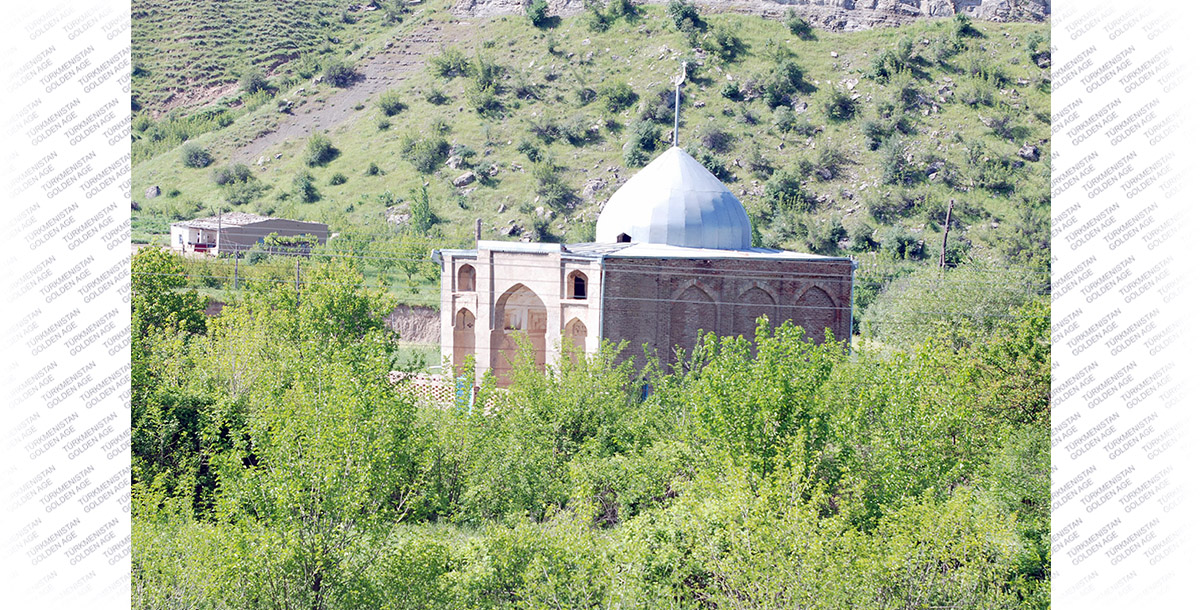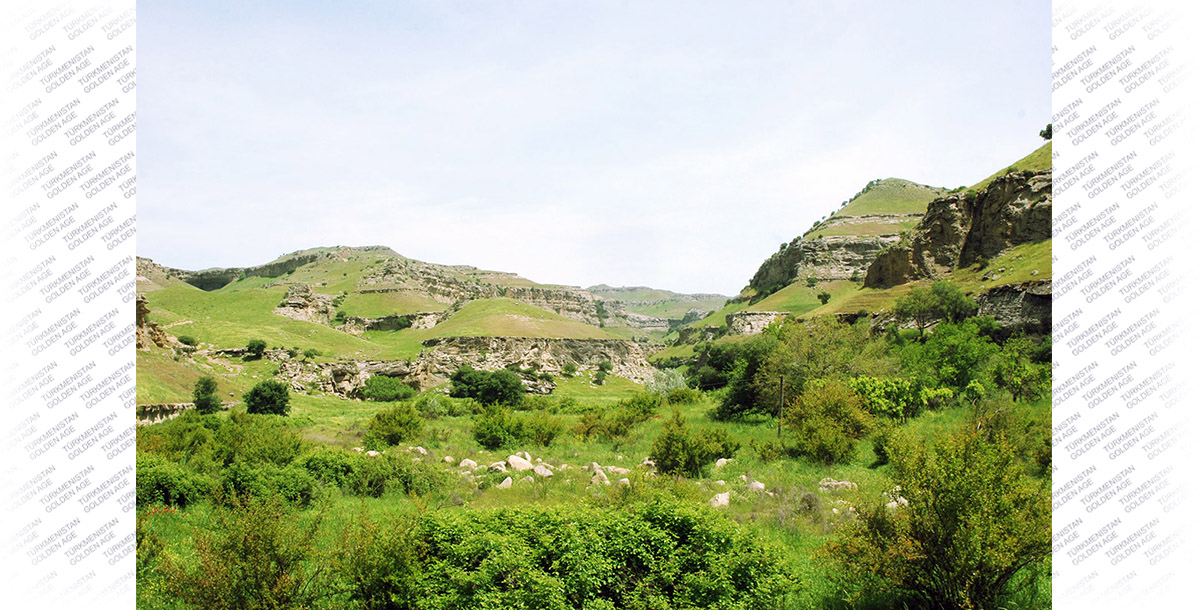You can get to the valley of the Sumbar river by mountain roads lying along the plateau, through the villages of Nukhur or Sayvan, and go down to the river valley along a serpentine. But it is better - at least once to drive along the highway through the fantastic vestibule of the valley - the "mountains of the moon". This is one of the striking local attractions of the southwestern Kopetdag.
Small hills, among the parted high ridges of the Kopetdag, look extremely amazing: from one to eight meters high, rounded, pinkish-cream, or gray or almost white. The impression is so stable that for many decades these mountains do not dignify anything other than "lunar". Particularly unusual view of the hills at sunset and after rain. Blue or yellow hills, behind them - gray hills, even further - a strip of blue mountains, and above them - the blue sky ... And immediately behind all this fantasy landscape - the etrap center Makhtumkuli (formerly Karakala) with a scattering of white houses, with plantations of subtropical crops and an endless green ribbon of pomegranate gardens.
In the history of the Turkmen people, the Sumbar Valley is a particularly dear and memorable place: the poet and philosopher Makhtumkuli-Fraghi spent his early years here. Artifacts associated with the name of the great Fraghi are kept in the poet's museum in his native village of Gerkez. His spiritual heritage - poems praising the ideas of humanism and unity of the nation, have rightfully become the golden fund of Turkmen literature.
Among the revered places in the valley are well-preserved architectural monuments from the XIV-XV centuries: the mausoleums of Shikh-Ovezberdy, Magtym-myazzem, and Shikh-AttarVeli. These monuments are rectangular mausoleums with double domes, made of baked bricks. Among them, the mausoleum Magtym-maezzem stands out - this is how the locals call the ancient building standing alone in the valley of the Sumbar River, near the village of Magtym-gala of the Magtymguly etrap.
Legends say that Magtym-meezzem, who was born in Djurdjan two centuries after the Mongol invasion, was not only a hereditary Sufi, but also “for ten years he did justice, being a ruler in his velayat” - apparently, we are talking about the interfluve of Etrek and Gorgan , inhabited by Turkmens and called Turkmensakhra (Turkmen steppe). He died in 900 AH, that is, in 1494 or 1495, and then the closest disciples and companions, probably following his will, loaded the body of the deceased on a white camel and set off. The saint was buried where the camel stopped - in a picturesque gorge on the high bank of Sumbar.
Following the bends of the river channel, the road winds along the bottom of the valley, climbing higher and higher. Along it are the villages of Gerkez, Arap-ata, Arapzhik, Tutly-kala, Kuruzhdey - you cannot name all of them. Everything here breathes history - both the ruins of ancient fortresses and the stone water conduits of the mills that once, back in the last century, tirelessly grinded the grain grown on the banks of the Sumbar.
A small rounded fortress with a diameter of about 10 meters, like a crown on the head of a royal person, is crowned by the inaccessible rocks of a mountain peak. Built of stones, sometimes fortified with clay, these structures have served since ancient times to protect the Turkmen tribes. Local legends and traditions will tell about big and small events that took place here. Often not connected with historical facts, however, these stories are striking in their living connection with the nature of the region and the traditional way of life of the people who inhabited the valley for millennia. For example, the Yazir-gala fortress, which is part of the Fakratdin complex, is associated with Yazir-khan, who ruled the Turkmen tribe "Garadashly".
Another historical site is the Garry-gala fortress, which was built on the southern slope of the Kopetdag ridge, northwest of the village of Sayvan. Small defensive fortifications, skillfully using the mountainous landscape, can be found in almost every village. The most remarkable were the fortifications at the Kochdemir waterfall, at the villages of Kuruzhdey and Tutlygala.
An unforgettable impression was made by Margyz-gala, a natural defensive structure located on the Gudzhik-dag mountain south of the Bendesen village. In this place, the top of the mountain is a plateau 1200 meters high, located on steep cliffs. It can only be climbed along a narrow corridor no more than one meter wide and about 20 meters long. Here, local residents found refuge when they were attacked by enemies.
Back in the 70s of the last century, researcher I.N. Khlopin discovered ancient burials in the western part of the village of Makhtumkuli. He managed to explore about 200 graves in the middle reaches of the Sumbar River, which testify that people lived here permanently, and the earliest settlements can be dated back to the 4th millennium BC. Among the finds, the most interesting and important were knives for trimming the pile, used by ancient craftsmen in the manufacture of carpets. They confirm the guesses of scientists about the existence of carpet weaving on the territory of Turkmenistan 3.5 thousand years ago.
The ancient cemetery in Chandir (neighboring valley) near the village of Gyzyl-Imam is widely known, with vertically placed stone grave pillars and ferto-shaped steles - balbals, installed several centuries ago by Turkic tribes. Caves are another attraction of this mountainous country. Uch-deshik, or as it is called here, is the Sherippe cave, located on the right bank of the Chendyr River, on a steep hill no more than 30 meters high. There are many legends associated with this place. According to one of them, a girl was hiding in a cave, who fled from the wild customs of her fellow tribesmen from the south and founded her small principality.
The nature of the region is unusually rich. Sheltered from lowland Turkmenistan by two ridges, the Sumbar Valley is a unique corner of the country, its subtropics. In the valley, the climate is unusually favorable for humans, which almost does not know winter. Life-giving, transparent air, filled with delicate aromas of grasses, flowers and fruit-bearing trees, picturesque landscapes of mountains and valleys, especially during the flowering of rich and varied, including evergreen, vegetation - all this brings the Sumbar Valley closer to the southern coast of Crimea. Barley, rye and cotton can grow here, cold-resistant varieties of apple trees, thermophilic pomegranates and figs bear fruit, decorative palms and cacti grow here.
In the etrap center of Makhtumkuli there is an experimental station of the Research and Production Experimental Center of the Institute of Botany, which contains a rich collection of the most valuable subtropical fruit and ornamental plants - almost two thousand varieties of local and introduced ones. And at the entrance to the town of Parkhai, famous for its healing hydrogen sulphide spring and burial monuments of the Bronze Age found by archaeologists, there is the estate of the Syunt-Khasardag reserve. Ecologists protect natural landscapes, are actively working to restore natural populations of animals and plants in their habitat.
Sheltered from the flat part of the country by two ridges, the Sumbar River valley is a unique protected area of nature. Here, where the picturesque open slopes of the Southwestern Kopetdag alternate with rock layers, conditions have been created for the habitation of various species of animals and plants, for example, such as walnuts, as well as mandrake - a valuable medicinal plant, the root of which is similar to that of ginseng. Many of them, due to natural and anthropogenic factors, have survived only here. 45 rare species of flora and 56 - fauna inhabiting these places made up more than a third of the new edition of the Red Book of Turkmenistan.
In the valley you can find rare animals - the black stork and the black vulture or its closest relative - the bearded man, one of the largest eagles - the golden eagle, the burial eagle, the snake-eagle. Turach, an ancient and rare species of birds, has become a living symbol of the Sumbar Valley.
The Red Book contains the Central Asian otter found here, the Kopetdag dormouse - a small mouse-like rodent, white karakurt - a yellowish-white spider, the poison of which is stronger than the snake one. Among mammals there are gazelles, mountain sheep or argali, Shaubi's bat - a bat, the smallest of wild cats - Pallas' cat, Turkestan lynx and the largest predator today - leopard.
The beauty of the Southwestern Kopetdag attracts travel lovers like a magnet. You come here again and again to see this beautiful land, which hospitably opens up its gorges, rings with crystal streams and welcomingly rustles the crowns of trees.
Vladimir Komarov
